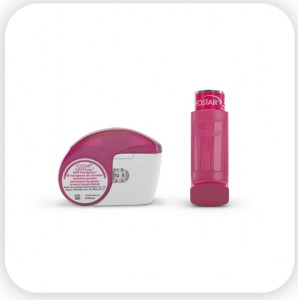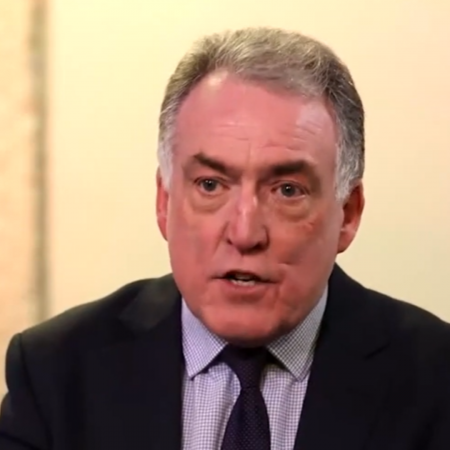What is the role of SABAs in asthma management?
Over the years, short-acting β2-agonists (SABAs) have been commonly prescribed ‘as needed’ for the quick relief of symptoms across asthma severities.1 With worsening symptoms, many patients tend to overuse, or over-rely on, SABAs instead of using preventive maintenance therapy.2
Overusing SABAs has been associated with avoidable asthma attacks, regardless of an individuals’ adherence to preventive therapy, or asthma severity.2 In fact, The National Review of Asthma Deaths (NRAD) considers little or no SABA use an indicator of good asthma control.3
SABA overprescribing is more common in the UK than other European countries4
The fast-acting nature of SABAs makes them suitable for treating sudden symptoms of breathlessness.5 SABAs exert their reliever effect by binding to β2-receptors in the airway walls and stimulating the relaxation of muscles to cause bronchodilation.5 But, as they lack anti-inflammatory properties, they do not target the underlying inflammation which causes symptoms and cannot prevent asthma progression.2,6
For this reason, there has been a shift in recommendations for the sole use of SABAs.7
What the guidelines say about the purpose of SABAs
The Global Initiative on Asthma (GINA) no longer advises SABA monotherapy in adults and adolescents – it is only recommended in combination with inhaled corticosteroid (ICS)-containing therapy.6
The British Thoracic Society/Scottish Intercollegiate Guideline Network (BTS/SIGN) guidelines also recommend SABAs simply as:8
- a short-term reliever – in all people with symptomatic asthma
- the drug of choice immediately before exercise.
If your patient is repeatedly using their SABA inhaler across more than one to two days, it signals the need to review and possibly introduce/increase controller management, if this has not already been done.6 There could be an opportunity to work with these patients to optimise their treatment or management approach to help them achieve better control of their symptoms.8
Why is SABA overuse a problem?
It is generally now understood that overusing SABAs masks the underlying inflammation and is related to an increased risk of asthma exacerbations, hospitalisations and asthma-related deaths.1,3,9 SABA overuse can also be associated with asthma sufferers who use less ICS than they need, which is a marker of poor asthma control itself.1,3
In the UK, the overall rate of SABA overuse is 38%. SABA overuse may be linked to asthma severity, with 58% of people living with moderate-to-severe asthma overusing their SABA inhalers, versus only 27% of those with mild asthma.2
Use of 3 or more SABA inhalers per year is associated with increased A&E visits and hospitalisations1,9
Overusing SABAs may also be related to:1,4
- increased hyperresponsiveness of the airways
- decreased response to bronchodilators
- reduced bronchoprotection (deep inspirations taken prior to a bronchial challenge to reduce the bronchoconstrictor response)
- negative effects on cognition and self-assessed status of general and mental health
- increased use of antidepressants, hypnotics and sedatives.
Learn more about the psychological impact of asthma in this Chiesi-funded patient survey Getting it off your chest.
What the guidelines say about SABA overuse
NICE guidelines consider asthma to be uncontrolled if patients need to use their SABA inhaler on three or more days a week.10 BTS/SIGN recommends reassessing and considering adjustments to treatment in people receiving a prescription of more than 12 SABA inhalers a year,8 while NRAD advises urgently reassessing those using, on average, more than one SABA inhaler per month.3
You can also use these factors to assess asthma control:3
- difficulty sleeping due to asthma in the past week
- changes in regular asthma symptoms, such as coughing, wheezing, tightness in the chest, and shortness of breath
- signs of asthma affecting daily routine in the past week.
How does combatting SABA overuse benefit patients and the NHS?
Reducing SABA overuse has the potential to:11,12
- decrease asthma-related healthcare use by patients, including hospital and A&E visits, and the related costs involved
- lower the total yearly carbon emission from SABA inhalers by 54-69% (UK 2020-2030).
In fact, the average asthma-related costs of healthcare resource use are 61% higher in people who overuse SABAs versus those who do not.11 Based on one study of 30,694 people with asthma, it is estimated there could be up to 70% fewer hospital admissions if avoidable SABA prescriptions are reduced.4
For these reasons, the NHS is encouraging action on SABA overuse through targeted Investment and Impact Fund (IIF) Direct Enhanced Service (DES) indicators. These are focused on reducing avoidable SABA prescribing, and conversely increasing appropriate, regular preventative inhaler prescribing across Primary Care Networks (PCNs).13
Taking action to reduce avoidable SABA prescribing and overuse should deliver the dual benefits of improving asthma control for individual patients and reducing total carbon emissions from inhaler prescribing; helping the NHS meet its ambitious sustainability goals.13,14
Learn more about Chiesi’s approach to supporting sustainable respiratory care.
Practical steps to help reduce SABA overuse
To reduce SABA overuse, improving identification and assessment of at-risk patients is key.3,4
Patient identification & assessment
| Identification:3,4,15 | Assessment:1,3,6,8,16 |
|
|
The potential role of MART in supporting SABA-reliant patients
- reduce SABA overuse
- decrease duration of SABA overuse
- improve adherence to ICS therapy.










